Adrian Collins's Blog, page 126
August 30, 2022
REVIEW: Ten Sigma by A.W Wang
TEN SIGMA is a dark psychosexual story of a woman recruited into a super soldier serum as an alternative to dying of cancer. Mary, later renamed Brin, hates being a burden to her husband and niece but is clearly not getting any better while also inflicting deep financial woe on her family. The Ten Sigma program promises to pay off all her family’s debts and also give them a nest egg to survive what is apparently the imminent collapse of the United States.
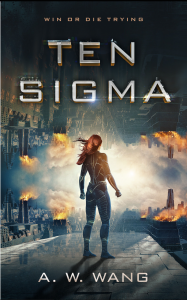 One of my only problems with this premise is the fact that the book says “all the free stuff” caused the collapse of the United States. Ignoring the economic questions of this, I’m pretty sure that most countries get away with socialized medicine and don’t collapse. Here, it’s clear that there’s no “free stuff” for Mary regarding her cancer treatment and the plot can’t advance without her financial ruin so I’m going to say this is the book’s only plot hole.
One of my only problems with this premise is the fact that the book says “all the free stuff” caused the collapse of the United States. Ignoring the economic questions of this, I’m pretty sure that most countries get away with socialized medicine and don’t collapse. Here, it’s clear that there’s no “free stuff” for Mary regarding her cancer treatment and the plot can’t advance without her financial ruin so I’m going to say this is the book’s only plot hole.
Anyway, Mary finds herself digitally uploaded to a virtual reality world where she has to advance through the ranks of a punishing series of war games against countless scenarios. If she dies during the battle, she’s deleted from the program. This is not Lit-RPG though and it is a staggering story of psychological damage and conditioning as Mary (now Brin) has her memories erased of her past life while being turned into a murderous killing machine.
Her teammates include the psychopath Syd, the old woman now young Suri, and a deeply troubled man named Walt. Everything other than orders is gradually erased from their mind with a large focus given on the fact that they are to be rendered sexless. Removing the libido from a computer program is probably very easy but leaves lasting psychological scars as one of the primary drives of human relationships vanishes from people who were not Ace in the first place.
Much of the book is Brin’s struggle to reach Ten Sigma and “graduate” from the hideous program that seems like a combination of the SPARTAN II program from HALO and John Scalzi’s OLD MAN’S WAR. It is an objectively evil thing, but the author treats their horrific abuse dispassionately, which makes it even more effective. I got some serious SQUID GAME vibes from the book and if you like the horrifying contests from that series then you’ll almost certainly enjoy this book.
Speaking of which, this is a book that will certainly not be for everyone. In addition to the relentless punishing violence our heroine is forced to endure, there’s also a lot of terrifying scenes dealing with sex, torture, and threat of rape. Syd is a horrific monster and the only one who can experience any form of sexual gratification, which he associates with killing as well. Charming guy. Needless to say, he tries to get our heroine into his clutches several times. If that causes you to nope the frick out then I don’t blame you.
A.W Wang does an excellent job of making you sympathize with Mary/Brin through her horrific ordeal. They have a grasp on how to make the most mundane and normal memories seem like treasures beyond price as they’re gradually slipping away in the deadening monotony of their training. If I have any complaints, it’s the fact that the program isn’t treated with quite the level of abject horror that it should be from most people, but they’ve been brainwashed to serve it so it’s understandable.
This is not the kind of novel you want to read if you don’t want to get in the absolute grimmest areas of the human psyche even with a sympathetic protagonist, but it is definitely well-written as well as exciting for those who like their science fiction dark as midnight.
Read Ten Sigma by A.W WangThe post REVIEW: Ten Sigma by A.W Wang appeared first on Grimdark Magazine.
August 28, 2022
REVIEW: Mechwarrior 5: Mercenaries
Sometimes, games don’t have to be mind-blowing to be enjoyable.
Video games can have severe flaws holding them back, yet I’ve played plenty of games over the last few years that I enjoyed more than the classic, cookie-cutter open-world game that saturates the market. I can think of a few examples of this in recent years. THQ Nordic’s Biomutant was a 2021 release that suffered from over-ambition, poor quest design, and some odd design choices. Combined with a 60 USD price tag, it put a lot of people off. While the game eventually burned me out, it still achieved some things well. I rather enjoyed the exploration and loot mechanics, and the game is a beauty to look at. Nine times out of ten, I would rather play an ambitious game with flaws designed with passion than a AAA open-world game that rarely differs from its competitors.

First Person Mech Combat. It doesn’t get more brutal than this!
Mechwarrior 5: Mercenaries is perhaps my favorite example of a game that isn’t amazing, but still addictive and enjoyable to play. It had a long, brutal and arduous development cycle, beginning from a Kickstarter campaign, to a last-minute, controversial release on the Epic Store in 2019 which delayed its planned Steam release by over 18 months. It finally came out on Steam in mid-2021, and after all the issues, I think it’s in a decent place now. It’s a deeply flawed game despite all the improvements it’s had over the last couple of years, but it’s one of the most enjoyable games I’ve ever played. Few games give me the addictive, dopamine rush Mechwarrior 5 does. There’s something about taking a bunch of giant mechs onto a planet and smashing up enemy factions and cities which feels so rewarding. I have over 80 hours in Mechwarrior 5: Mercenaries as of writing this piece, and I’m sure that will increase.
IntroductionMechwarrior 5: Mercenaries is the latest of the Mechwarrior series, a set of games and books which carries a loyal and passionate fanbase. The game’s goal is simple: you manage a mercenary company consisting of pilots and mechs, with a large universe to explore and procedural missions to take part in as well as handcrafted questlines. There’s plenty of customization and ways to pimp out your little robot toys for ultimate destruction, and the universe is certainly grimdark. Commissions and contracts don’t care how many people die or what gets blown up, as long as the job is done. It reminds me a lot of Brigador’s universe; another excellent mech game that I’ll review at some point! While there are plenty of games in this franchise, there have been few in the last decade, with only Battletech and Mechwarrior 5 on the horizon.
FlawsWith the introduction out of the way, let’s talk about some problems it has. Mechwarrior 5 has plenty of issues even now. Performance has been a thorn in its side since release, especially on the more recent console versions, and there are plenty of bugs and glitches that emerged for me during campaign and career mode. While none of the bugs I had was game-breaking, it’s something I need to mention. The campaign is a mixed bag overall, with poor story writing, cliched characters, and weak voice acting across the board, though there are some bright spots here and there.

The story and writing won’t be winning any awards. Still beats D&D’s adaptation talents, though.
While there are moments of brilliance in terms of level and mission design, most of the content depends on procedural missions. While this doesn’t take anything away from enjoying the gameplay loop, I would have preferred to see more handcrafted missions, and it can get slightly repetitive at times.
The gameplay has some issues with AI: teammates tend to crap out during missions, which makes for a frustrating experience at times. While this can be helped by assigning weapon groups to them and giving them basic commands, it does make solo playthroughs frustrating at times. Too often I’ve played a mission and ended up with more damage to my mechs as a result of questionable AI pilot decisions. No, Spencer, you shouldn’t have parked your mech right between my Gauss cannon! You would still have both your arms!
StrengthsFortunately, Mechwarrior 5: Mercenaries has full, seamless co-op, and it’s one of the best parts of the game. While I don’t have much experience with the multiplayer mode, I’ve dabbled with some skirmish matches and they have been a delight to play. You can also play campaign and career mode co-op, which feels great to play.
For the problems the game has, it has many things going for it. The gameplay loop is fantastic all around. It’s so simple but incredibly addictive. Fly to a star system to take a contract, and sort bonuses for what you need most. More money, or is it salvage you require? Do the mission, carry out repairs, spend money on upgrades or new mechs, and try out another star system. Rinse and repeat. While the mission design gets repetitive, the meat of the game is the fantastic mech combat, and getting into a rough fight with custom-made mechs is just so satisfying. With so many different mechs and parts available, there’s plenty of room to customize and tinker.
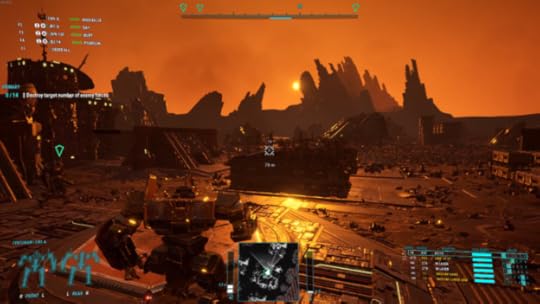
It might not be known for its graphics, but Mechwarrior 5 can be beautiful at times.
If it’s just quick battles you want, there’s an updated and chunky Instant Action mode available. I’ve grown to love this feature because there’s quite a lot you can do with it. Customize any random mission while tweaking difficulty, weather, and biomes, or you could replay any unlocked campaign scenario as well. With the ability to try out any mech and loadout in the game, it is an underrated feature.
There are three major pieces of DLC for the game. There’s Inner Sphere, Legend of the Kestral Lancers which adds a linear, high-quality custom campaign, and more recently Call to Arms, which adds dedicated melee combat to the game. While the campaign mode had elements of sandbox gameplay, the Heroes of the Inner Sphere expansion added a separate, complete career mode, with all the questlines from the base campaign included. While all three are solid additions, I’d argue that Inner Sphere is almost essential to enjoy Mechwarrior 5 to the fullest.
While I’ve had plenty of enjoyment from the vanilla game, one of the biggest strengths comes from the modding community. Yep, Mechwarrior 5 has pretty solid mod support, with a great number available that tweaks mechanics, adds mechs, and even new missions. It’s fairly easy to mod through Steam Workshop or the Nexusmods website, and even Co-op playthroughs can utilize them. Some mods improve the biomes, increase or decrease difficulty and even redesign how the mech bay functions, unlocking complete customization of any mech in the game. I’ve always been a supporter of mods for games because they greatly extend their lifespan, and Mechwarrior is another example of that.
ConclusionTo conclude, Mechwarrior 5: Mercenaries might be one of the most flawed games on the market today. It’s been a pretty rough time for a while. I wish the story was better. I wish it was less buggy, and I wish the gameplay was a bit more varied. Despite all of this, I just can’t stop playing it.
Final Score: 3.5/5
The post REVIEW: Mechwarrior 5: Mercenaries appeared first on Grimdark Magazine.
August 27, 2022
REVIEW: Vampire: The Masquerade: Vol. 2: The Mortician’s Army
Vampire: The Masquerade: Vol. 2: The Mortician’s Army by Tim Seeley, Blake Howard, and Tini Howard is the second installment of the entertaining graphic tie-in to the World of Darkness gameline. It finishes up the main story started in Winter’s Teeth and while there is a three issue follow-up, I think this is mostly a complete arc by itself.
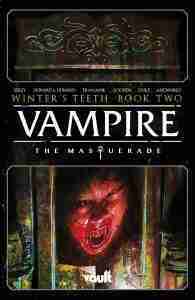 For those unfamiliar with that, well, this isn’t the comic for you. But for those who remembered the Nineties, you might recall a Goth themed tabletop roleplaying game called Vampire: The Masquerade. It is a game about the world being controlled by vampires who keep their existence secret while feuding with one another.
For those unfamiliar with that, well, this isn’t the comic for you. But for those who remembered the Nineties, you might recall a Goth themed tabletop roleplaying game called Vampire: The Masquerade. It is a game about the world being controlled by vampires who keep their existence secret while feuding with one another.
The premise of the comic line is former Anarch vampire, Cecily Bain, has adopted a stray vampire named Alijandra. The city is under assault by a group of hunters called the Mortician’s Army. Cecily has become the scapegoat for the murder of both the Prince of the city as well as everything else going wrong as her (former) best friend, Calder Wendt, is trying to impress a visiting undead dignitary. Simultaneously, a group of Anarchs led by a Nosferatu named King Rat and a Thin Blood named Colleen Pendergrass are struggling to escape their own hunter problems.
The politics and writing of these comics is really impressive. Tim Seeley is already the author of one of my all-time favorite comics with Hack/Slash. However, this is something that is almost up there. I think the only reason it’s not is the lack of gratituous fanservice. Which I probably shouldn’t admit to but, what can I say, I really love me some sexy vampires and would have appreciated some more here.
The art is, as always, fantastic and I love the Gothic Punk sensibility that has been updated to the 21st century. The vampires are a wide variety of appearances with very few being the impossibly pretty people of paranormal romance. While I miss the fanservice this entails, everyone looks like they might actually be able to pass themselves off as human beings.
The action is also good with the use of Disciplines as well as weapons being something that gives all of the violence a hardened realistic edge to it. Humans are very squishy when exposed to the Kindred and I like that element. We only have the advantage against the undead until we squander it out of pride or a belief in “fair” combat.
The ending is suitably bleak and ironic with it having much of the appeal to be found in a Vampire: The Masquerade story. The worst are destroyed, the good are slain, and the only slightly evil are allowed to prosper. I wish this had remained an ongoing but, for what it is, it is an exceptionally good story.
4/5
Read Vampire: The Masquerade Vol. 2: The Mortician’s ArmyThe post REVIEW: Vampire: The Masquerade: Vol. 2: The Mortician’s Army appeared first on Grimdark Magazine.
August 26, 2022
Top 10 Standalone Grimdark Novels
We all love fantasy trilogies and other series where we can immerse ourselves in new worlds and develop long-lasting relationships with characters over the course of multiple books. The majority of fantasy novels—grimdark fantasies included—are published as series.
However, sometimes I am not ready for the commitment of starting a new series and am left craving standalone fantasies. Here I am defining “standalone” as books that are not part of a series and do not require knowledge of other works by the same authors to enjoy fully.
It is surprisingly difficult to find standalone grimdark fantasies. Here I’ve compiled a list of ten excellent standalone novels we think grimdark fans will love, presented in no particular order. These standalone novels also represent a good cross-section of authors who are creating some of the most exciting new work in grimdark.
Before proceeding, I’d like to express my thanks to the Grimdark Fiction Readers & Writers Facebook group for several great suggestions of books to include on this list. Without further ado, here are ten excellent standalone grimdark novels for your reading pleasure.
Norylska Groans by Michael R. Fletcher and Clayton W. Snyder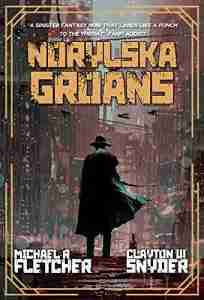 Norylska Groans is a tour de force from two of the top authors in grimdark fantasy, Michael R. Fletcher and Clayton W. Snyder. The story is set in the Russia-inspired industrial city of Norylska, the perfect setting for an urban grimdark novel, bathed in filth and constantly groaning from its brutal cold and wind.
Norylska Groans is a tour de force from two of the top authors in grimdark fantasy, Michael R. Fletcher and Clayton W. Snyder. The story is set in the Russia-inspired industrial city of Norylska, the perfect setting for an urban grimdark novel, bathed in filth and constantly groaning from its brutal cold and wind.
Read the full review here.
ABOUT THE BOOKNorylska Groans…with the weight of her crimes. In a city where winter reigns amid the fires of industry and war, soot and snow conspire to conceal centuries of death and deception.
Norylska Groans…and the weight of a leaden sky threatens to crush her people. Katyushka Leonova, desperate to restore her family name, takes a job with Norylska’s brutal police force. To support his family, Genndy Antonov finds bloody work with a local crime syndicate.
Norylska Groans…with the weight of her dead. As bodies fall, the two discover a foul truth hidden beneath layers of deception and violence: Come the thaw, what was buried will be revealed.
Read Norylska Groans by Michael R. Fletcher and Clayton W. SnyderThe Book Eaters by Sunyi Dean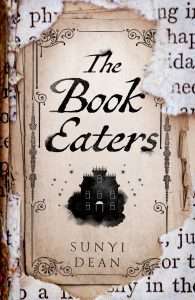 The Book Eaters is told with an abundance of dry wit, drawing the reader in. With its focus on characters and immersive world-building, the plot moves at a slower pace, giving the story room to breathe and capturing the reader’s full attention. This is one of those books that you don’t devour quickly, but savor slowly.
The Book Eaters is told with an abundance of dry wit, drawing the reader in. With its focus on characters and immersive world-building, the plot moves at a slower pace, giving the story room to breathe and capturing the reader’s full attention. This is one of those books that you don’t devour quickly, but savor slowly.
Read the full review here.
ABOUT THE BOOKOut on the Yorkshire Moors lives a secret line of people for whom books are food, and who retain all of a book’s content after eating it. To them, spy novels are a peppery snack; romance novels are sweet and delicious. Eating a map can help them remember destinations, and children, when they misbehave, are forced to eat dry, musty pages from dictionaries.
Devon is part of The Family, an old and reclusive clan of book eaters. Her brothers grow up feasting on stories of valor and adventure, and Devon—like all other book eater women—is raised on a carefully curated diet of fairytales and cautionary stories.
But real life doesn’t always come with happy endings, as Devon learns when her son is born with a rare and darker kind of hunger—not for books, but for human minds.
Read The Book Eaters by Sunyi DeanThe Priory of the Orange Tree by Samantha Shannon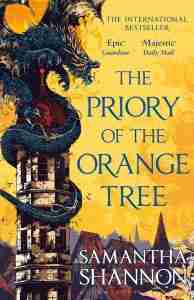 The Priory of the Orange Tree is an epic fantasy jewel of a novel, featuring terrific characters, stunning set-pieces, and a brilliantly crafted grand and picturesque world.
The Priory of the Orange Tree is an epic fantasy jewel of a novel, featuring terrific characters, stunning set-pieces, and a brilliantly crafted grand and picturesque world.
Read the full review here.
ABOUT THE BOOKA world divided. A queendom without an heir. An ancient enemy awakens.
The House of Berethnet has ruled Inys for a thousand years. Still unwed, Queen Sabran the Ninth must conceive a daughter to protect her realm from destruction – but assassins are getting closer to her door.
Ead Duryan is an outsider at court. Though she has risen to the position of lady-in-waiting, she is loyal to a hidden society of mages. Ead keeps a watchful eye on Sabran, secretly protecting her with forbidden magic.
Across the dark sea, Tané has trained to be a dragonrider since she was a child but is forced to make a choice that could see her life unravel.
Meanwhile, the divided East and West refuse to parley, and forces of chaos are rising from their sleep.
Read The Priory of the Orange Tree by Samantha ShannonUnder the Pendulum Sun by Jeannette Ng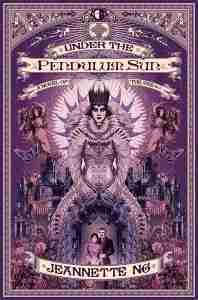 Under the Pendulum Sun is decidedly bleak, nihilistic, and perhaps the most morally grey novel you will read in some time. In addition to being grimdark to those of us in the aesthetic camp, Under the Pendulum Sun is also beautifully written, evocative, provocative, fascinating, and, foremost, fantastic in the true sense of the word.
Under the Pendulum Sun is decidedly bleak, nihilistic, and perhaps the most morally grey novel you will read in some time. In addition to being grimdark to those of us in the aesthetic camp, Under the Pendulum Sun is also beautifully written, evocative, provocative, fascinating, and, foremost, fantastic in the true sense of the word.
Read the full review here.
ABOUT THE BOOKCatherine Helstone’s brother, Laon, has disappeared in Arcadia, legendary land of the magical fae. Desperate for news of him, she makes the perilous journey, but once there, she finds herself alone and isolated in the sinister house of Gethsemane. At last there comes news: her beloved brother is riding to be reunited with her soon – but the Queen of the Fae and her insane court are hard on his heels.
Read Under the Pendulum Sun by Jeannette NgThe Maleficent Seven by Cameron Johnston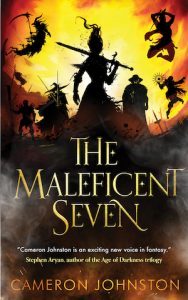 The Maleficent Seven from author Cameron Johnston is an interesting, bloody, action-packed novel that starts big and doesn’t let up. Starting at a point where most novels would end, The Maleficent Seven brings a bunch of grim, weary bastards together to protect a town threatened by the march of a seemingly unstoppable army of fanatics. Humor, blood, and a lot of bad people doing bad things – The Maleficent Seven is a book you will not want to miss.
The Maleficent Seven from author Cameron Johnston is an interesting, bloody, action-packed novel that starts big and doesn’t let up. Starting at a point where most novels would end, The Maleficent Seven brings a bunch of grim, weary bastards together to protect a town threatened by the march of a seemingly unstoppable army of fanatics. Humor, blood, and a lot of bad people doing bad things – The Maleficent Seven is a book you will not want to miss.
Read the full review here.
ABOUT THE BOOKBlack Herran was a dread demonologist, and the most ruthless general in all Essoran. She assembled the six most fearsome warriors to captain her armies: a necromancer, a vampire lord, a demigod, an orcish warleader, a pirate queen, and a twisted alchemist. Together they brought the whole continent to its knees… Until the day she abandoned her army, on the eve of total victory. 40 years later, she must bring her former captains back together for one final stand, in the small town of Tarnbrooke – the last bastion against a fanatical new enemy tearing through the land, intent on finishing the job Black Herran started years before. Seven bloodthirsty monsters. One town. Their last hope.
Read The Maleficent Seven by Cameron JohnstonThe Sword of Kaigen by M.L. Wang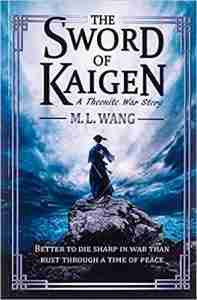 The Sword of Kaigen is a well written and fast paced romp through a fictional Japan-adjacent country living on the brink of war and trying to maintain its martial and cultural traditions while the rest of the world is leaping forward with technology.
The Sword of Kaigen is a well written and fast paced romp through a fictional Japan-adjacent country living on the brink of war and trying to maintain its martial and cultural traditions while the rest of the world is leaping forward with technology.
Read more here.
ABOUT THE BOOKOn a mountainside at the edge of the Kaigenese Empire live the most powerful warriors in the world, superhumans capable of raising the sea and wielding blades of ice. For hundreds of years, the fighters of the Kusanagi Peninsula have held the Empire’s enemies at bay, earning their frozen spit of land the name ‘The Sword of Kaigen.’
Born into Kusanagi’s legendary Matsuda family, fourteen-year-old Mamoru has always known his purpose: to master his family’s fighting techniques and defend his homeland. But when an outsider arrives and pulls back the curtain on Kaigen’s alleged age of peace, Mamoru realizes that he might not have much time to become the fighter he was bred to be. Worse, the empire he was bred to defend may stand on a foundation of lies.
Misaki told herself that she left the passions of her youth behind when she married into the Matsuda house. Determined to be a good housewife and mother, she hid away her sword, along with everything from her days as a fighter in a faraway country. But with her growing son asking questions about the outside world, the threat of an impending invasion looming across the sea, and her frigid husband grating on her nerves, Misaki finds the fighter in her clawing its way back to the surface.
When the winds of war reach their peninsula, will the Matsuda family have the strength to defend their empire? Or will they tear each other apart before the true enemies even reach their shores?
Read The Sword of Kaigen by M.L. WangSnakewood by Adrian Selby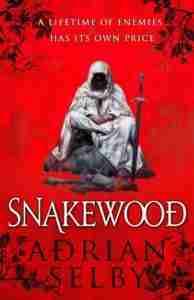
Snakewood by Adrian Selby
Make no mistake: Snakewood is grimdark. It’s grimdark and then some. Moral ambiguity infuses all the major characters, and no clear line is ever drawn between right and wrong, good and evil.
Read the full review here.
ABOUT THE BOOKAn epic fantasy like no other, Adrian Selby’s debut takes an unblinking look at the price we pay for our pasts, the art of war and the people who make it their business. Enter a violent world of revenge and bloody combat with characters you’ll never forget.
They called them Kailen’s Twenty, a legendary band of ruthless mercenaries who gave no quarter. Living only by the code of steel, blood and coin, and aided by fightbrews that gave them the edge in battle, whoever met their price won.
Now, broken up and seemingly forgotten, they are being hunted down, one by one.
Drawn from multiple accounts compiled by a scholar investigating the legendary group’s demise, who is also the son of one of the Twenty, Snakewood is fantasy at its most inventive and rewarding.
Read Snakewood by Adrian SelbyRemote Control by Nnedi Okorafor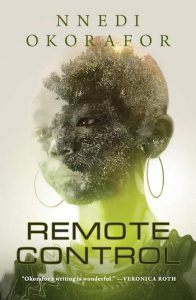 The ending is like a warm, loving, grimdark slap in the face. It comes out of nowhere and works brilliantly.
The ending is like a warm, loving, grimdark slap in the face. It comes out of nowhere and works brilliantly.
Read the full review here.
ABOUT THE BOOKThe day Fatima forgot her name, Death paid a visit. From here on in she would be known as Sankofa—a name that meant nothing to anyone but her, the only tie to her family and her past.
Her touch is death, and with a glance a town can fall. And she walks—alone, except for her fox companion—searching for the object that came from the sky and gave itself to her when the meteors fell and when she was yet unchanged; searching for answers.
But is there a greater purpose for Sankofa, now that Death is her constant companion?
Read Remote Control by Nnedi OkoraforGhosts of Tomorrow by Michael R. Fletcher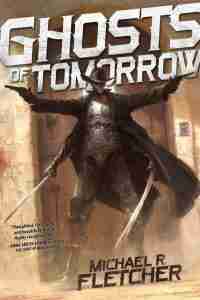
Ghosts of Tomorrow by Michael R. Fletcher
In the not-so-distant future, humanity has become dependent on “Scans.” These are effectively crude A.I. created by taking human brains and copying them in a process which destroys them. The book has action, drama, pathos, cyborgs, and genuinely despicable behavior from humans motivated by money.
Read the full review here.
ABOUT THE BOOKThe children are the future. And someone is turning them into highly trained killing machines.
Straight out of school, Griffin, a junior Investigations agent for the North American Trade Union, is put on the case: Find and close the illegal crèches. No one expects him to succeed, Griffin least of all. Installed in a combat chassis Abdul, a depressed seventeen-year-old killed during the Secession Wars in Old Montreal, is assigned as Griffin’s Heavy Weapons support. Nadia, a state-sanctioned investigative reporter working the stolen children story, pushes Griffin ever deeper into the nightmare of the black market brain trade.
Deep in the La Carpio slums of Costa Rica, the scanned mind of an autistic girl runs the South American Mafia’s business interests. But she wants more. She wants freedom. And she has come to see humanity as a threat. She has an answer: Archaeidae. At fourteen, he is the deadliest assassin alive. Two children against the world.
The world is going to need some help.
Read Ghosts of Tomorrow by Michael R. FletcherGunlaw by Mark Lawrence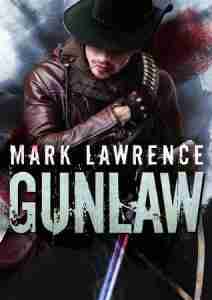 Mark Lawrence (being the prolific legend that he is) has a tall stack of short stories freely available on his website. He also has a cracking fantasy western novel called Gunlaw on Wattpad. With Lawrence’s versatility, you know there is a good chance you’ll enjoy yourself.
Mark Lawrence (being the prolific legend that he is) has a tall stack of short stories freely available on his website. He also has a cracking fantasy western novel called Gunlaw on Wattpad. With Lawrence’s versatility, you know there is a good chance you’ll enjoy yourself.
Read more here.
ABOUT THE BOOKA complete fantasy book. Technically, a weird western. Gunslingers, hex witches, dogmen, minotaur, trains that run further than you can imagine…
Mikeos Jones is a gunslinger, faster than thinking, part of the gunlaw, a man who can seldom afford the luxury of looking past the end of any given day.
Jenna Crossard is a hex-witch, but her ambitions are larger than spells and charms – the need to understand the world consumes her. They say the gunlaw keeps men safe from the endless horror of the sect, but to Jenna it’s a cage and she wants out. If that means breaking open the world and killing a few gods…so be it.
Read Gunlaw by Mark LawrenceGunlaw is only available on Wattpad, here.
The post Top 10 Standalone Grimdark Novels appeared first on Grimdark Magazine.
REVIEW: Empire Under a Dying Sun by Joseph O. Doran
The world is ending. Cataclysmic lashes of fire emerge from the sun and wipe out anything in their path. Fissures emerge out of nowhere, engulfing entire towns. No one is safe.
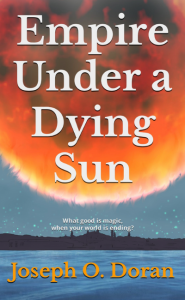 The empress Anyosa realizes they have one chance at staving off pure doom, and that is to unite three magestones, ancient magical artifacts. The magestones can put up defenses to ward off the worst of the skyfires, and if all three are put together, it might well save the empire. Unfortunately, while they have one in their empire, the other two belong to their neighbouring empires.
The empress Anyosa realizes they have one chance at staving off pure doom, and that is to unite three magestones, ancient magical artifacts. The magestones can put up defenses to ward off the worst of the skyfires, and if all three are put together, it might well save the empire. Unfortunately, while they have one in their empire, the other two belong to their neighbouring empires.
She sends her loyal count Sethes as general for one of her three armies. One of the neighbouring kingdoms has already been seriously damaged by the skyfires and they hope to liberate that one easily. Such is the opening to Joseph O. Doran’s Empire Under A Dying Sun.
There’s a lot to like in this book. The world-building, in particular, is strong and Doran uses specific word choices to really reinforce that sense of place. The titles generally have a Roman style to them, but not consistently, because it’s a massive enough empire that other countries and their customs have been swept up into it. I also appreciated that the three empires generally respected each other even as they warred for land and had constant border skirmishes. Until the end of the world, those clashes simply felt like they would be an ongoing part of business, a natural hazard of living on the frontier.
I also really enjoyed that at the end of the world, the empress organized a major sporting event. People need distractions, and it’s always nice when fantasy writers remember sports in their world-building. Even better, the sporting event and the public relations that went along with it ended up having an important role in the plot.
Empire Under a Dying Sun also touches, briefly, on religion at the end of the world. The ancient religions had mostly been forgotten but with things so apocalyptic some people started praying again. One of the most fascinating scenes was when brief ghostly fragments of those gods appeared, just as helpless against the skyfires as the mortals.
When the third empire becomes important in the plot, it brought in some much-needed horror.
The witches were eerie and I loved that even after centuries of living next to their kingdom, no one had a clue how any of their magic worked. Their creation of Shriekers—monsters formed from dark magic—felt like standard fantasy fare, but a scene near the end had these monsters just swaying and dancing in a way that made them feel both more human and inhuman at the same time.
The primary characters were well-sketched—Count Sethes as the loyal general who’s also a secret drunkard, Anyosa the empress still testing herself against her mercurial court, and for my money the standout Nthanda, the foreign soldier Sethes trusts most. They’re all principled and want what’s best but at the end of the world, principles fall by the wayside.
The downside of this worldbuilding is that it could be wide in scope, but not always in-depth. This could be the case with both places and characters. We only found out that certain places even existed in the tale of their destruction. Dealing with such a global catastrophe, it’s a hard balance.
This happened with characters too, in both Anyosa’s plotline and Sethes. For instance, Anyosa had to deal with a conniving noble who had kept important information from her, but that entire sequence was all in one scene. Had we known and hated him before, it would have felt much more cathartic when Anyosa dealt with him. And Sethes had to deal with a new general in the back half of the book who seemed to be given some narrative weight and again, was only in one chapter.
The ideas in Empire Under a Dying Sun are unique and fascinating. I’ve read plenty of fantasy where preventing the apocalypse is the stake, and some that’s post-apocalyptic, but living through an apocalypse was new—especially an apocalypse that cannot be staved off through the power of magical swords in guts. The panic of people living through the end of days and what they did to survive was well-done.
Empire Under a Dying Sun has one rating on Amazon and Goodreads, and that’s not reasonable. It really does deserve more love than that. If the rest of this review makes you think you might like to try it out, please do.
The post REVIEW: Empire Under a Dying Sun by Joseph O. Doran appeared first on Grimdark Magazine.
August 24, 2022
REVIEW: Babel by R.F. Kuang
There are books you devour. And then there are books you nibble at in small chunks, books you need to savour because they are revelatory in so many different ways. And Babel by R.F. Kuang is one of the latter. Subtitled , or the Necessity of Violence: An Arcane History of the Oxford Translators’ Revolution, it is made clear from the beginning that this isn’t your average dark academia themed fantasy novel. As we have come to expect from Kuang after The Poppy War (see our review here), there is a tonal shift within the novel. This takes it from relatively quaint academic setting, exploring the experiences Robin faces as a mixed-race Chinese-British student at Oxford, to a high-stakes revolution, to questioning the British reliance on colonialism and on the labour of people who are essentially the fruit of that colonialism.
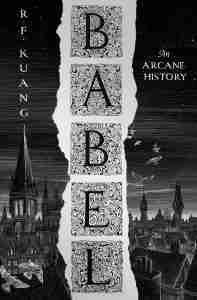 Kuang can write. We all knew that going in, but it feels like she’s levelled up again since The Burning God. Her prose is delightful and straightforward, epic and hitting exactly where it hurts. Babel features main characters with Chinese, Indian and Caribbean heritage among various other flavours of cultural diversity. This means that we not only get to see the experiences of an outsider in a traditional institution like Oxford, a place that even today is dominated by those who fit a certain mold and have followed a set path from childhood, but we follow characters who are strangers to nineteenth Century England as a whole. People who most at the time wouldn’t consider worthy of an education. People who are taught to be grateful for every scrap they’re given and every bit of bad treatment – because they should consider it more than they deserve.
Kuang can write. We all knew that going in, but it feels like she’s levelled up again since The Burning God. Her prose is delightful and straightforward, epic and hitting exactly where it hurts. Babel features main characters with Chinese, Indian and Caribbean heritage among various other flavours of cultural diversity. This means that we not only get to see the experiences of an outsider in a traditional institution like Oxford, a place that even today is dominated by those who fit a certain mold and have followed a set path from childhood, but we follow characters who are strangers to nineteenth Century England as a whole. People who most at the time wouldn’t consider worthy of an education. People who are taught to be grateful for every scrap they’re given and every bit of bad treatment – because they should consider it more than they deserve.
Babel isn’t an easy read. As readers we are confronted with our own failings, with places where we as a society have been complacent and have been letting others suffer because we didn’t speak up and fight for and with them. It is a book that ends in tragedy, in a devastating ending, as even the title hints at. But through this, through the writing and it’s brilliant characters Babel is also a rewarding read. It is a compelling story, one that is told with nuance and makes the reader reflect, and possibly changes them for the better. Babel is the kind of book that you will need to read and reread to fully grasp, and every new read will reveal new details to you, new elements to focus on. This is a book like a university degree – the amount you get out of it is proportional to the energy you put in, and if you’re willing, is infinite.
Read Babel by R.F. KuangThe post REVIEW: Babel by R.F. Kuang appeared first on Grimdark Magazine.
August 23, 2022
REVIEW: Juniper & Thorn by Ava Reid
Juniper & Thorn by Ava Reid takes the fairy tale “The Juniper Tree” into a gothic horror story about survival in a deeply haunting world. Ava Reid’s magical storytelling always makes me feel like I’ve fallen down a dark well into another world. I’m frightened every moment but love every second that I’m stuck. A horror novel in the truest sense, Reid’s sophomore novel left me chilled to the bone in all the right, intensely emotional, ways.
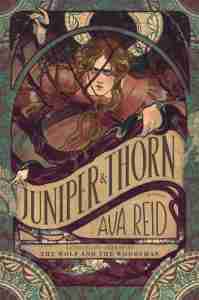 Set in the same world as The Wolf and the Woodsman, Juniper & Thorn introduces readers to a new era. Industry brews. Some people are all for it. Others boil in anger at this new modern place as their old Oblya starts to fade. In Oblya live three sister witches and their cruel wizard father. When Marlinchen sneaks out one night to see a beautiful ballet dancer, she experiences a new world away from her father’s old one. Once she catches a taste of freedom, she finds it hard to resist her desire for something new.
Set in the same world as The Wolf and the Woodsman, Juniper & Thorn introduces readers to a new era. Industry brews. Some people are all for it. Others boil in anger at this new modern place as their old Oblya starts to fade. In Oblya live three sister witches and their cruel wizard father. When Marlinchen sneaks out one night to see a beautiful ballet dancer, she experiences a new world away from her father’s old one. Once she catches a taste of freedom, she finds it hard to resist her desire for something new.
The image of what appears to be a seemingly innocent young witch shifts the moment the ballet dancer pukes in front of her. Her reaction is caused by how beautiful he looks while throwing up after imbibing too much vodka.
I like that she sees beauty in someone even when they are objectively disgusting. Everything is intentionally abrupt in this story, as we’re meant to feel the horrifying reality of Marlinchen’s life. Juniper & Thorn speaks honestly about the impacts of child sexual abuse. Magic is dark in this world, where abuse reigns and a father’s appetite has no limit.
Marlinchen, a flesh diviner, has the gift of magical touch. She sticks out like you can smell her. Reid describes characters full of grease, smelly, and bruised. The imperfections of people show themselves, such as in those moments Marlinchen looks closely at every human paying for her service. On closer inspection, even the beautiful ballet dancer, Sevastyan, looks craggly and a bit less chiseled than she previously thought.
Reid writes characters whose hearts you can hear beating in fear for what happens around them. The result is Marlinchen, who is unflinchingly real. I see quietness in her, which is magnificently juxtaposed as she becomes ravenous for hope with someone that truly sees and appreciates her. Moments of love and light amongst all the horror made this into a great read.
This is a book about the uncomfortable truth of pain buried in abuse. There’s no placating the reader in the name of heroic expectations in Juniper & Thorn. The world and the writing are as vicious as real life in its darkest moments. It rips with a ferocity of a hungry wolf in winter, slowly tearing any bit of flesh it can find.
Read Juniper & Thorn by Ava ReidThe post REVIEW: Juniper & Thorn by Ava Reid appeared first on Grimdark Magazine.
REVIEW: Orphan: First Kill
Orphan: First Kill is a prequel to 2009’s Orphan, which starred Isabelle Fuhrman as the murderous Esther. In the original, Esther was the adopted ‘evil child’ before it was revealed she’s actually a grown adult who only looks like a child (due to hypopituitarism). The prequel takes a modest pivot to tell the story of how Esther stole the identity of a missing girl called Esther Albright. The film’s main premise being Esther returning to the USA to be with the Albright family.
 Isabelle Fuhrman is strong in reprising the role of Esther, even if it’s harder to believe she (25 this year) is a believable child. Similarly, Julia Stiles excels as the hyper-competent, and at times sensual, mother. Fuhrman and Stiles carry a lot of the film together. Matthew Finlan (the brother) and Hiro Kanagawa (the detective) provide complementary performances.
Isabelle Fuhrman is strong in reprising the role of Esther, even if it’s harder to believe she (25 this year) is a believable child. Similarly, Julia Stiles excels as the hyper-competent, and at times sensual, mother. Fuhrman and Stiles carry a lot of the film together. Matthew Finlan (the brother) and Hiro Kanagawa (the detective) provide complementary performances.
Orphan: First Kill opens in the Saarne Institute, the Estonian mental hospital discussed in the original, before Esther manages to escape. We have some lovely panning visuals of snow-covered landscapes and a quaint ‘Estonian’ town—I understand these sections were shot in Canada though. This opening section is strong, heavy on atmosphere and tension; however, I expected it to take up a bigger part of the film.
In contrast to the original, the audience already knows the real Esther so the setup is totally different. Orphan: First Kill doesn’t shy away from this. The opening scenes show Esther at full throttle from the outset, and it leans into its ludicrous premise. However, partway through the film goes in a totally different direction than I had anticipated. One moment in particular absolutely took me by surprise. This worked well for me, as I don’t think trying to recreate the original would have worked; however, it comes at the cost of the creepiness and tension that some horror fans want from the genre.
Orphan: First Kill is visually interesting, in particular the opening scenes in the Saarne Institute and scenes showing off the gothic-inspired Albright House. Most other locations aren’t overly memorable, and the black-light painting conceit didn’t do much for me (except in the marketing material). Sprinkled throughout are some clever framing tricks that I really enjoyed. From a music perspective, it’s solid but much like the rest of the film, there is a disconnect between the opening scenes – which are tense orchestral pieces—and later scenes—which lean into the campiness.
Overall, Orphan: First Kill is a fun addition to the Orphan franchise. It will appeal more to those fans who like their horror campy rather than creepy. But it still has enough surprises to keep its viewers guessing.
Orphan: First Kill releases in Australian cinemas on the 1st of September, 2022.
The post REVIEW: Orphan: First Kill appeared first on Grimdark Magazine.
August 22, 2022
REVIEW: Nightfall in Middle Earth by Blind Guardian
Nightfall in Middle Earth is the first studio album I’ve reviewed for Grimdark Magazine. It’s also one of my favorite power metal bands’ greatest works. The fact it’s also a concept album based around Middle Earth only makes it a better choice, IMHO. It’s something released in 1998, so we’re not exactly talking cutting edge, but I think that true music lasts forever. That it is based on The Silmarillion only makes it better.
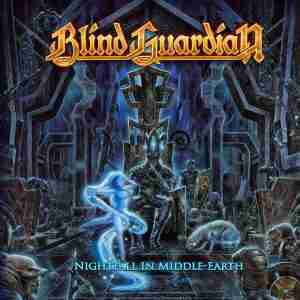 I should note that Nightfall in Middle Earth is hardly going to be something most power metal fans, especially of “heavy mithril” fantasy rock, will need introduction to. It’s easily Blind Guardian’s most famous album in the United States and something that you’re probably going to stumble over if you bother to check out fantasy metal. However, there’s plenty of people out there who probably aren’t as familiar with the power metal or fantasy rock genres so hopefully this will introduce a few new fans.
I should note that Nightfall in Middle Earth is hardly going to be something most power metal fans, especially of “heavy mithril” fantasy rock, will need introduction to. It’s easily Blind Guardian’s most famous album in the United States and something that you’re probably going to stumble over if you bother to check out fantasy metal. However, there’s plenty of people out there who probably aren’t as familiar with the power metal or fantasy rock genres so hopefully this will introduce a few new fans.
The album is from the perspective of Morgoth, Middle-Earth’s version of the Devil for you heathens out there, and we get several little vignettes that carry on the story in between the actual song-songs. I happened to like this and while it doesn’t quite reach the point of being a full-on power metal opera, it does move the story along enough that you might be willing to give it a listen all the way through in one go.
The music is hard to describe as it’s not just your traditional power metal sound but there’s quite a bit of melodious, folksy Medieval sounding tunes spread between the fast guitar work. There’s violins, flutes, and other stuff that strangely works well with the harder sound. That doesn’t stop it from being heavy metal, though, and there’s some truly epic sounds here.
If I had to pick the best ones of the album, though, I’m going to have to go with “The Curse of Feanor”, which is my favorite Dark Lord song (as well as inspired my “Wraith Knight” novel). “Mirror Mirror” which I just think rocks. “Noldor” and “Time Stands Still (On the Iron Hill)” that are probably the ones I listen to most. I think they’re fantastic tracks but there’s very little to complain about the work overall.
Blind Guardian is very experimental in this installment and the results of said experiment are a distillation of how fantasy can mix with metal. It is both a beautiful illustration of Tolkien’s world as well as completely badass. Really, the mixture of genres and Medieval instruments with hard rock shouldn’t work but it does.
It’s slightly over an hour to listen to the entire album but Nightfall in Middle Earth is just a fanatic work from beginning to end. I think if you’re a fan of Tolkien and metal, you’re really obligated to pick this one up as it’s a fabulous addition to any collection. It’s worth listening to even if you don’t know The Similarillion but you get much more out of it if you do.
Listen to Nightfall in Middle Earth by Blind GuardianThe post REVIEW: Nightfall in Middle Earth by Blind Guardian appeared first on Grimdark Magazine.
REVIEW: The Hollows by Daniel Church
A small village experiences big terror in The Hollows, the thrilling debut novel by British horror writer Daniel Church.
 The Hollows is set in the Peak District, a sparsely populated upland region of middle England, which makes the perfect backdrop for horror.
The Hollows is set in the Peak District, a sparsely populated upland region of middle England, which makes the perfect backdrop for horror.
As the book opens, a once-in-a-lifetime snowstorm envelops the isolated village of Barsall. The town constable, Ellie Cheetham, is investigating the demise of a local deadbeat, who has apparently frozen to death after passing out drunk in the midst of the storm.
However, the circumstances of his death point to a more complicated explanation, as the dead man is found gripping a knife in an apparent attempt at self-defense. More oddly, a mysterious symbol is found drawn on a stone near the body of the victim. While the initial setup for The Hollows follows that of a traditional crime thriller, a sense of horror steadily builds throughout the novel, becoming the dominant mood for most of the book.
Although Ellie Cheetham is the main protagonist of The Hollows, the viewpoint shifts among three other strong female leads. Church paints convincing, multifaceted portraits of all four leads, each of whom has realistic flaws making them relatable and largely sympathetic characters.
Daniel Church grabs the reader’s attention from the first few pages and maintains a fast-paced plot throughout the book, steadily building suspense as the body count rises. The author’s crisp writing style is a perfect match for the brutal, wintry setting of the novel. The last hundred pages of the book are a romp, culminating with an epic climactic scene. Daniel Church kept me glued to the pages, unable to put the novel down until I arrived, reluctantly, at the end, leaving me thirsty for more.
I especially enjoyed the cultish folk horror aspects of The Hollows, but I wish the author had provided greater depth to the history of the village and its local legends. At the end of the novel, I was still left wondering why these urban legends were known only to a small sliver of the population, leaving others in ignorance.
One other minor complaint is that although The Hollows is full of action, there is a sameness to many of the action scenes. I was hoping for a bit more variety in the types of action experienced by the characters. But these are small criticisms in a book that is, overwhelmingly, a very exciting and thought-provoking read.
All in all, The Hollows is an extraordinary debut novel, establishing Daniel Church as an electrifying new voice in speculative fiction.
4/5
Read The Hollows by Daniel ChurchThe post REVIEW: The Hollows by Daniel Church appeared first on Grimdark Magazine.



